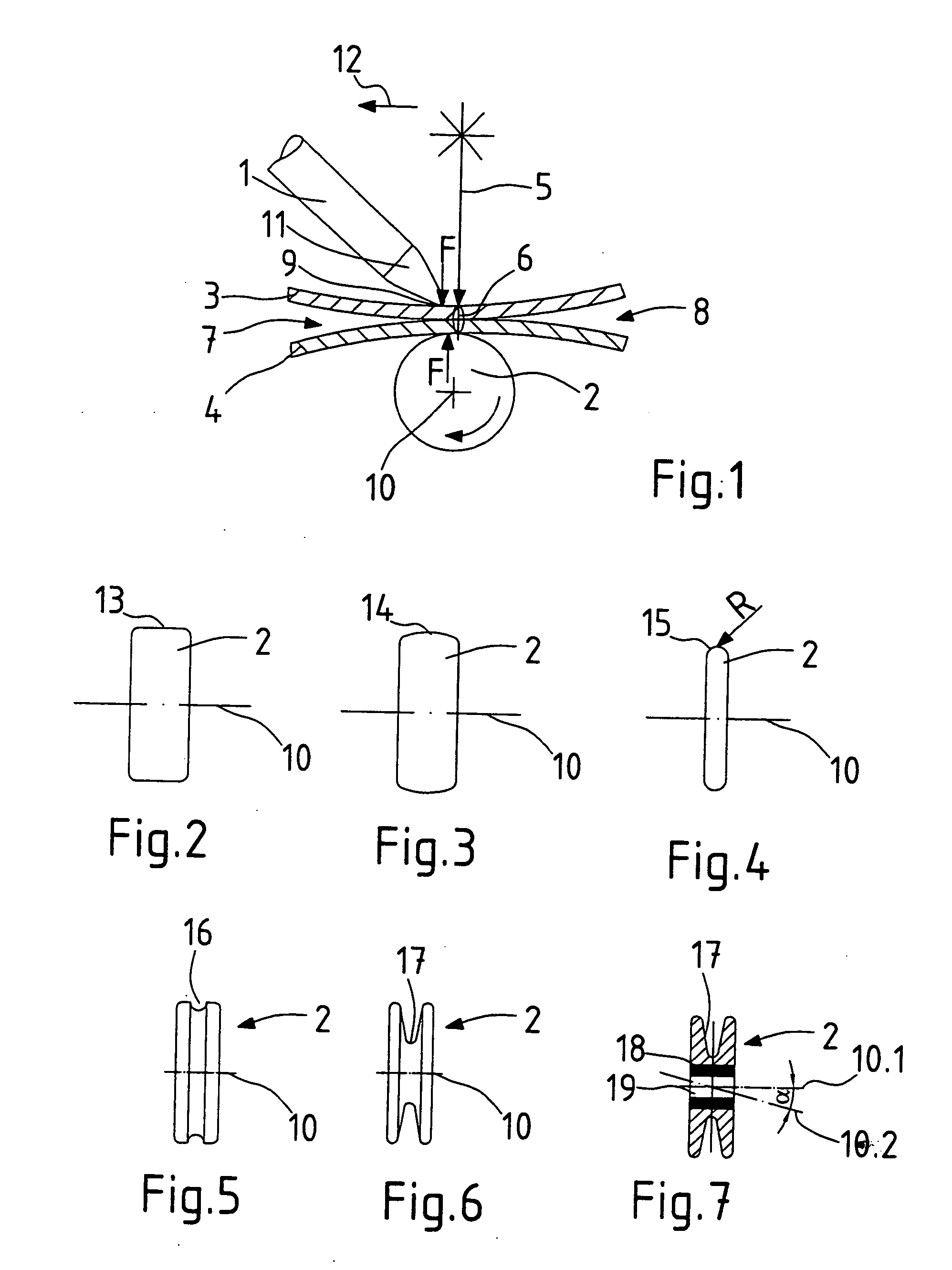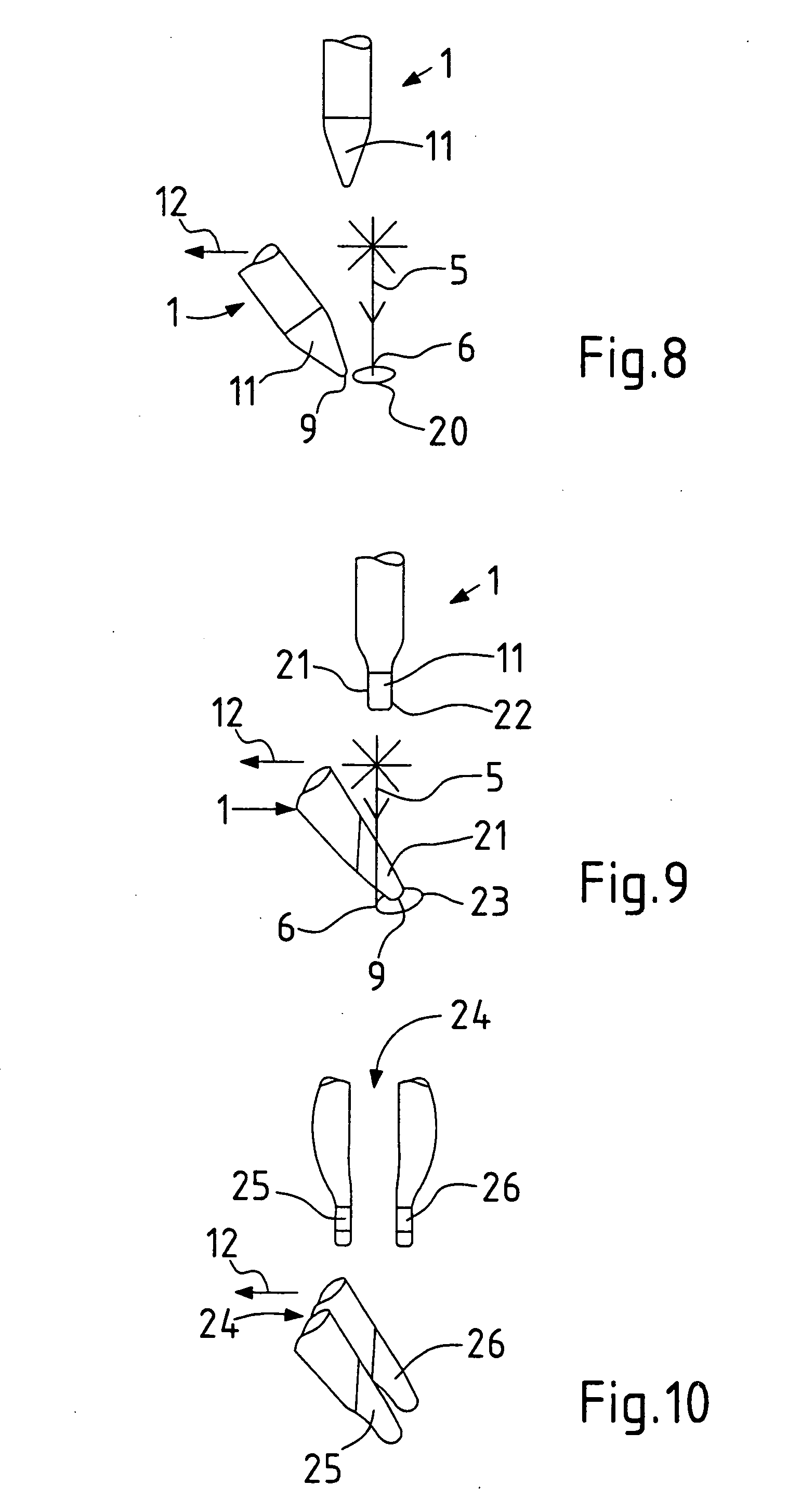Clamping device for processing work pieces
a technology for processing work pieces and clamping elements, which is applied in the direction of forging/hammering/hammering apparatus, forging/hammering/pressing machines,auxillary welding devices, etc. it can solve the problems of static redundancy, complex, expensive and inflexible, and the type of fixing and clamping elements are tailored specifically for a component. it is easy to maintain control of such a welding process, improve the joint location, and control the joint gap locally
- Summary
- Abstract
- Description
- Claims
- Application Information
AI Technical Summary
Benefits of technology
Problems solved by technology
Method used
Image
Examples
Embodiment Construction
[0029]FIG. 1 shows a principle schematic of a clamping device with a clamping finger 1 and a clamping roller 2 for clamping of two sheets 3, 4 during welding with a laser beam 5. The laser beam 5 impinges perpendicularly upon the surface of the sheet 3. The clamping device is activated or operated, that means, clamp fingers 1 and clamping roller 2 are positioned against the sheets 3, 4 and they exercise upon the sheets 3, 4 a clamping force, which presses together the sheets 3, 4 at the welding location 6. On the welding location 6 the sheets 3, 4 lie tight against each other. In the absence of the effect of the clamping force gaps 7, 8 exists between the sheets 3, 4 outside of the welding location 6. The clamping device, inclusive of actuating process, can be provided on an arm of a robot, or in the clamping finger 1 and the clamping roller 2 can be applied and retracted for moving of the clamping location 9 to clamping location 9 on the sheets 3, 4. The movement of clamping positi...
PUM
| Property | Measurement | Unit |
|---|---|---|
| clamp force | aaaaa | aaaaa |
| gap width | aaaaa | aaaaa |
| power intensity | aaaaa | aaaaa |
Abstract
Description
Claims
Application Information
 Login to View More
Login to View More - R&D
- Intellectual Property
- Life Sciences
- Materials
- Tech Scout
- Unparalleled Data Quality
- Higher Quality Content
- 60% Fewer Hallucinations
Browse by: Latest US Patents, China's latest patents, Technical Efficacy Thesaurus, Application Domain, Technology Topic, Popular Technical Reports.
© 2025 PatSnap. All rights reserved.Legal|Privacy policy|Modern Slavery Act Transparency Statement|Sitemap|About US| Contact US: help@patsnap.com



